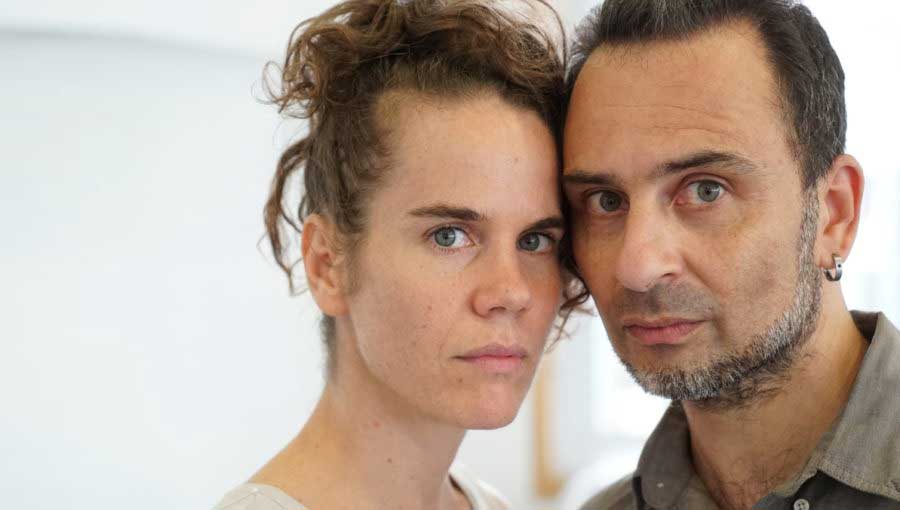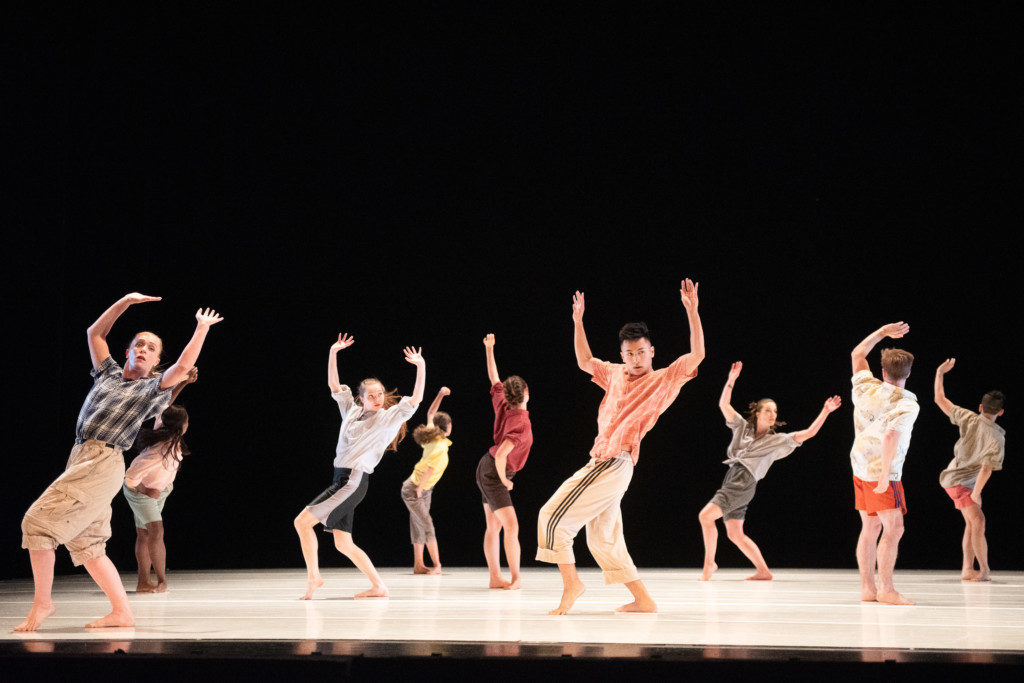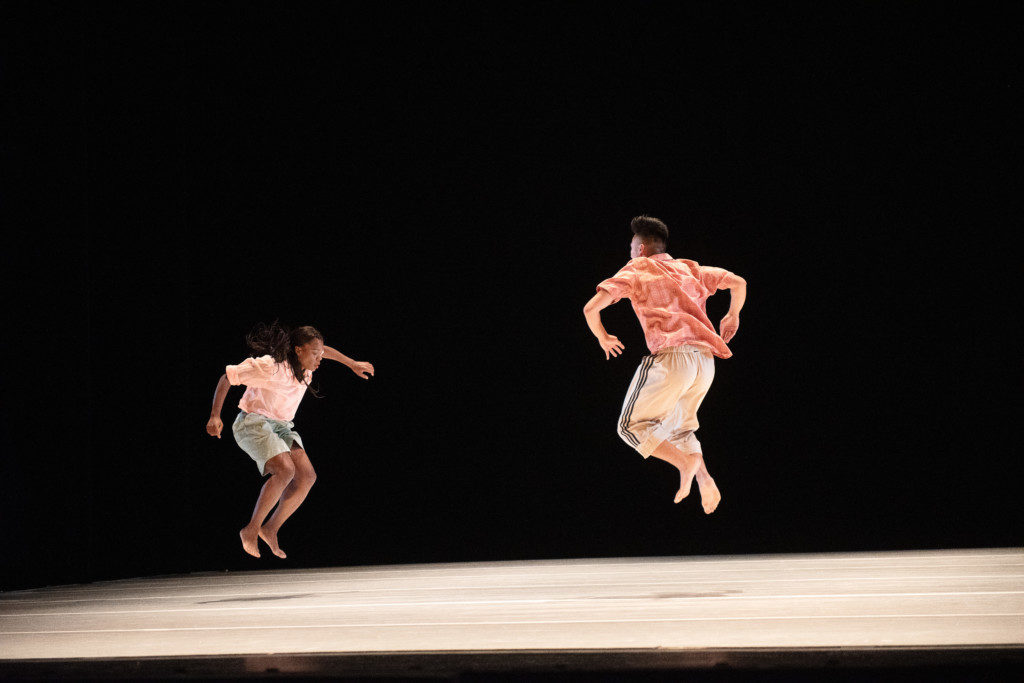For choreographer Noa Zuk, her long-time friendship with Repertory Dance Theatre (RDT) feels so natural and strong that even when months or years lapse before they connect again, they can pick up wherever they left off, just as easily as if they had chatted earlier that day.
That relationship started in 2014 when the Israeli choreographer came to Salt Lake City to set By The Snake on the company dancers. “I will always have a big space in my heart for Linda [Smith, the company’s executive and artistic director] and RDT because from the first time, we had a match and everybody agreed about so many things in dance,” Zuk said in a phone interview with The Utah Review. “Every time I am with these dancers, it feels like magic for how they connect to the piece and not just the choreography but also how they put themselves inside the work with their own personalities.”
RDT will open its 59th season this week with a production of three pieces by Zuk, including By The Snake and Outdoors and the Utah premiere of a “glimpse,” as she explained, of an earlier Zuk work. Performances will take place daily Thursday through Saturday (Oct. 3-5) at 7:30 p.m. in the Jeanné Wagner Theatre at the Rose Wagner Center for Peforming Arts.
Zuk, a master teacher of Gaga movement and a former dancer with the Batsheva Dance accompany and Ohad Fishof, her long-time collaborator who has worked on the music and dramaturgy for the works that will be presented in NOA, have visited SLC numerous times for workshops, restagings and new productions. Zuk returned this summer to Utah for Dance West, the collaborative workshop hosted by RDT, Ririe-Woodbury Dance Company, and the University of Utah School of Dance.
Conceived originally as a piece for six dancers, By The Snake was later expanded to give all eight RDT dancers the opportunity to perform it. The work joyously upends the social and gender conventions of couples dancing with an exhilarating score to boot featuring Israeli folk dance.
It also was the gateway for RDT dancers to master the Gaga movement language. As Zuk explained in a previous interview with The Utah Review, Gaga, is a “toolbox” that heightens “our awareness of our body” and “the many qualities connected to the basics of our love to dance.” Fishof, who also joined that interview, added that it is not a dance style or choreography as much for interpreting a work as it is for expanding a dancer’s abilities to interpret and connect to an endless depth and range of possibilities.
RDT dancers have become proficient with Gaga. As a repertory company where they learn so many different movement languages and use multiple vocabularies in a single concert, the Gaga language is ideally streamlined to make the short time they have with visiting choreographers as beneficial as possible in making the best artistic connections as interpreters of Gaga movement pieces.
In the most recent interview, Zuk said she has been consistently impressed with how quickly and easily the dancers have mastered the movement language and how their bodies carry the information. “In the first time, my language was so new to everyone,” she recalled. “When I returned the second time to work on By The Snake, I could see that they were already that much more present in the work. And, then the third time, they were even quicker to jump deeper and wider into the language and even the new dancers snapped into the language of the movement just as quickly. It is like a miracle to see how these dancers own these pieces and they really are amazing.”
In 2019, Zuk and Fishof returned to RDT, ro restage the first half of a 2018 work Shutdown that was premiered by the Wee Dance Company in Germany, a group that had merged at the time with the Gerhart Hauptmann Theatre in Görlitz-Zittau.
The first half, which RDT will perform, is called Outdoors, while the second is called Indoors. The music for Outdoors is a 15-second rhythmic ‘sentence’ that repeats itself 60 times in many variations.
This work seems suited to the bailiwick of excellence for RDT’s dancers. While a work might not be specified as a ritual at the outset, the communal act of moving together means that at some point it does become a ritual for the dancers. There is a deterministic sense, as the individual dancers gravitate toward a system or entity larger than themselves.
The premise for Outdoors is simple: a concise rhythmic idea where the variations are represented by movement and sound. The work becomes a unique naturally occurring story every time it is performed. Thus, the dancers “own the piece,” as Zuk explained, adding the performers become the music for the work, as they feel the rhythmic sentence in their bodies and find their own direction. “Their musicality develops independently from the rhythmic sentence,” Fishof added, from an earlier interview with The Utah Review.
Outdoors is about creating a world where “we never think ahead of what it will be in the end,” as Zuk said. Fishof previously explained that it starts as “accidental, arbitrary, unconscious, circumstantial, and intentional … and then turns into something else.” He compared it to an elaborated procedure — like the steps required to taking a nuclear power plant off line. “It’s very complex but you cannot take it back or reverse it,” he added.
Zuk said she is pleased about the accessible cosmopolitan nature of the work, which has been performed around the world, including Switzerland, Germany, England and Bulgaria. As for preparing the RDT dancers for their upcoming performance of Outdoors, Zuk said, “the dancers were so solid in the choreography that we did not need to spend a lot of time on it,” adding that it was accomplished through a Zoom rehearsal. “I felt good about quickly they connected to it and they worked fast to master any changes and new details.”
Rounding out the program are two short sections from Gringo, a 35-minute tongue-in-cheek work Zuk created for a Singapore dance company. The seven-minute “glimpse” or “sample taste,” as she referenced them, is also known as An Old Woman Picking Up A Stone From The Ground And Carrying It Back To Her House. The work includes a duet and a group section, with Zuk again playing with rhythm, small gestures and the connections between dancers.
For tickets and more information, see the RDT website.





